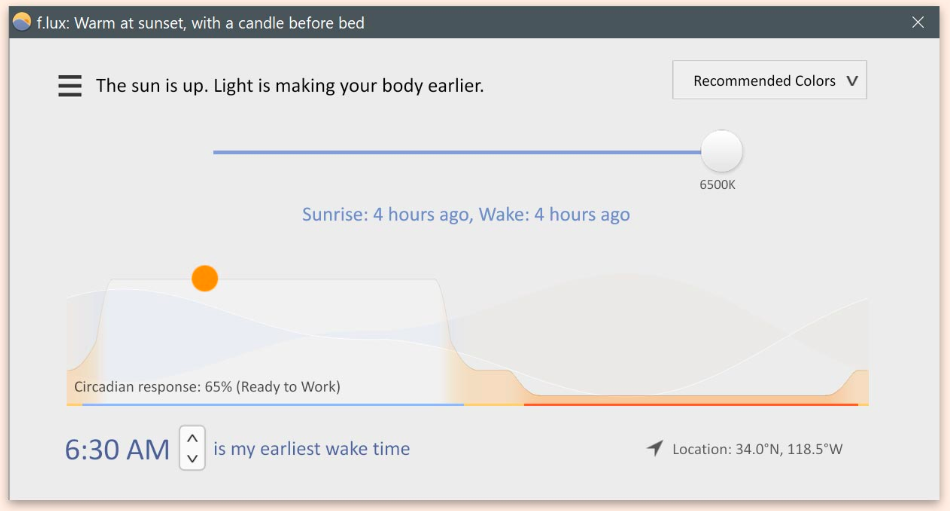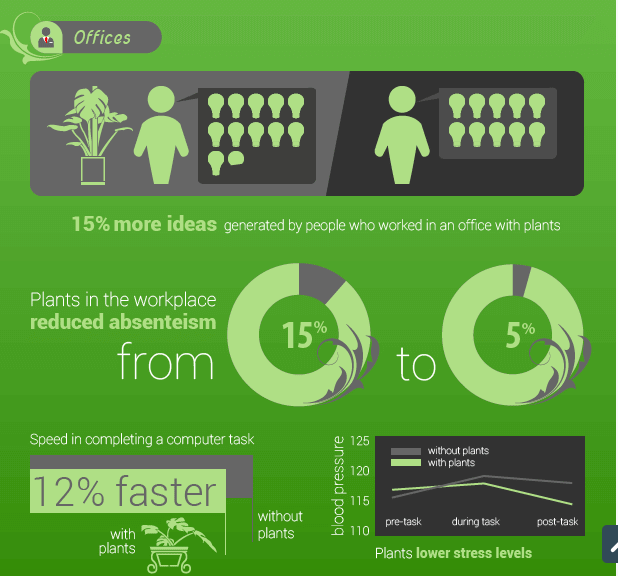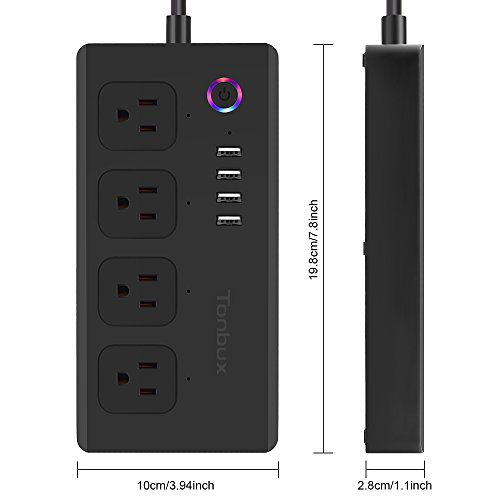
It's no secret that sustainability is en vogue. This is especially true when it comes to commercial real estate trends.
Employees are asking for greener offices, and managers recognize the productivity and health benefits of green design.
Creating a greener office space doesn't need to be expensive or time-consuming. If you're interested in crafting an eco-friendly office, there are a few quick, easy ways you can get started:
- Increase Employees’ Exposure to Natural Light
- Invest in Live Office Plants
- Reduce Unnecessary Energy Use
This article discusses how you can kickstart these three initiatives in your workspace. Take action without delay, and happier, more efficient employees will return your investment in sustainability.
1. Increase Employees’ Exposure to Natural Light
Fortunately, bringing more daylight to your employees’ desks doesn’t require costly relocation fees. You can take immediate steps to increase workers’ exposure to natural light.
Your employees will thank you. Natural light boosts energy, mood, and productivity.
Harvard Business Review reports that natural lighting is the most highly ranked office perk. According to the report, 47% of employees feel tired at work because they aren’t exposed to enough natural light.
Also, sunlight brings natural warmth to indoor spaces, which means you’ll consume less electricity to stay comfortable in the winter.
There are several ways you can quickly prioritize natural light in your office space:
- Replace indoor meetings with outdoor walks
- Create an open office space without opaque panels
- Open the blinds and place desks next to windows
Instead of opaque cubicle walls, consider transparent panels. You could also allow more sunlight by removing excessive furniture or incorporating reflective pieces in the office.
For regular check-ins that don’t require a screen, take a walk outside—even if it’s just around the parking lot. Make sure your employees know it’s OK to venture outside for a quick dose of sunlight during working hours.
Light adjustment apps that mimic outdoor lighting conditions can make it easier for workers to work on an artificially-lit screen. Software like f.lux adjusts laptop lighting according to the location and the hour.

Source: f.lux
Using this type of software, your screen will look warmer at night and bluer during the day. These apps improve workers’ overall health by enhancing their quality of sleep.
Your workers will be grateful if you take advantage of quick and easy ways to bring more sunlight into their workspace.
2. Invest in Live Office Plants
Investing in office plants is an easy way to increase workers’ morale and the indoor air quality of your office. Plants can reduce CO2 levels by as much as 50%, along with mitigating dust, mold, and bacteria.
According to The Guardian, employees are 15% more productive when their offices incorporate a few indoor plants.
Ambius collected data that shows employees accomplish tasks more quickly and generate more ideas in offices with plants.

Vegetation even reduces workers’ stress levels and absences.
You should choose plants that are easy to take care of and then assign the caretaking task to employees. Plants provide a way to actively engage workers in the office environment, increasing their investment in the company.
Optimal plants for office space include:
- Pothos, which can tolerate all light conditions
- Air Plants, which don’t even require any soil
- Snake Plants, which thrives on low levels of water
Make sure to space your plants out so that each employee has a view of vegetation from where they’re sitting.
Purchasing office plants is an easy task with measurable benefits. Your employees will be happy to work in the green, clean environment plants create.
3. Reduce Unnecessary Energy Use
Offices are full of large appliances (e.g., desktops and printers) that drain energy when they aren’t in use. Even when the devices are off, they’re still using energy. You can stop these “vampire” appliances from consuming electricity by switching off the power strip.
Spreading awareness about reducing unnecessary energy use will boost your reputation among employees. It could also reduce your electricity bills by up to 20%, according to Duke Energy.
If you don’t want to unplug devices or switch off power strips manually, there are smart solutions to help.
You can program intelligent power strips to turn off your devices at a certain time. Or, a current-sensing power strip will shut off when one key item is shut down.
For example, you could program the strip to turn off everything at your workstation when your desktop shuts down. Tonbux’s Wifi Smart Power Strip retails for only $25.49 on Amazon.

Source: Fabathome
You can control this power strip remotely by choosing the time of day to turn your devices on or off. You can also monitor your devices remotely using the free app.
A smart power strip is a quick and easy investment that can save money while making your office space more sustainable.
Informing your employees about their “vampire” devices is an actionable step toward a greener workspace.
Incorporating Green Design Doesn’t Have to Be Costly or Time-Consuming
Creating an office that functions sustainability doesn’t have to be a major investment.
You can increase your employees’ exposure to daylight by encouraging them to take meetings outside. Picking up several indoor plants for your workspace is an easy way to boost morale. Switching “vampire” power strips with programmable solutions ensure your appliances aren’t consuming energy when they’re shut off.
Creating a greener office space is as easy as making the decision and committing to it. Returns on this investment will include more efficient employees and reduced costs.
About the Author
Nicole Schlabach is a Content & Editorial Associate for Clutch, a content- and data-driven resource for businesses to research, vet, and determine the best services providers for their needs.